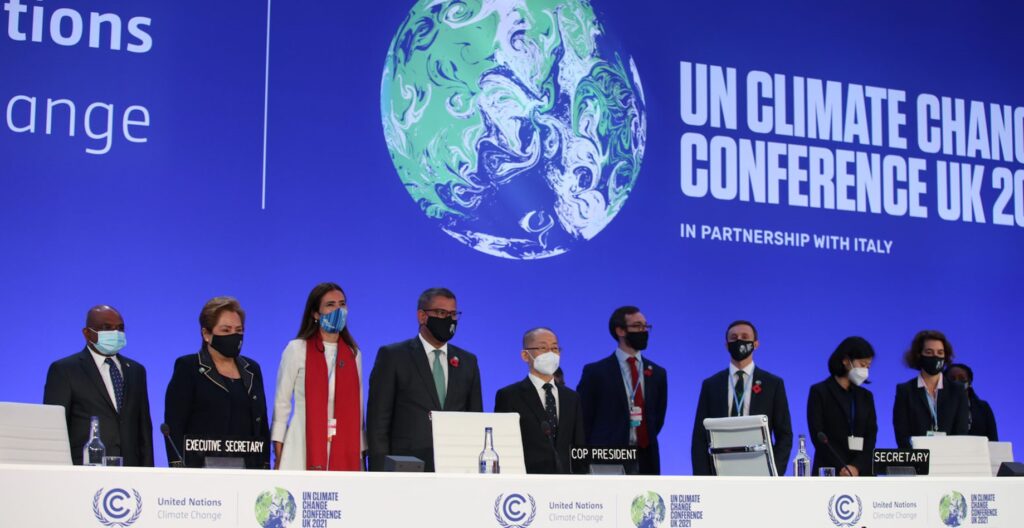
Closing Loopholes in Carbon Offset Regulation
International law and voluntary compliance systems have struggled to regulate carbon offsets. A new addition to the Paris Agreement– Article 6–might change that.
Some carbon emissions are too difficult and expensive to eliminate now. So, to achieve mandatory or voluntary emissions targets at the lowest cost possible, many companies and countries plan to use carbon offsets to counterbalance their emissions. However, carbon offset policies have historically struggled to ensure legitimate reductions in greenhouse gas emissions.
The first attempt to establish an independent international governance body for carbon offsets was the Clean Development Mechanism (CDM) under the Kyoto Protocol in 2006. The CDM allowed industrialized countries to earn one credit for every tonne of CO2 they reduced through emission-reduction projects in developing countries. Industrialized countries could then use or sell those credits to meet their legally binding emission reduction targets.
However, the CDM was widely criticized for its inability to regulate a concept called additionality–entities were receiving credits for projects that would have happened anyhow. In lieu of this, a patchwork of voluntary registries and standards like the Gold Standard have stepped in to ensure additionality. Yet double-counting across registries and differences in calculating key measures have made compliance assurance difficult. So difficult, in fact, that we are back to trying the CDM again.
Last year’s COP26 decision brought forth an improved successor of the CDM–Article 6.4 of the Paris Agreement. Article 6.4 creates the framework to ensure that registered carbon offsets are additional, permanent, and don’t cause pollution elsewhere. Through Article 6.4, you are supposed to determine additionality by using “best available technologies” and looking at average emission levels of “comparable activities.” Evidently, it is questionable whether Article 6.4 will stop entities from inflating the amount of emissions that would have been produced without the project, as well as deflating the amount of emissions the project itself produces, to receive more credits.

Article 6.4 also prevents double-counting by requiring host countries of projects to adjust their national emissions tally when authorizing a project’s credits to a nation or company abroad. However, a grandfathering of CDM credits undermines this by allowing no adjustment to the national emissions tally. As there was an excess amount of CDM credits, countries lobbied to allow all CDM projects registered after January 1, 2013 to be registered as Article 6.4 activities. Given that there are around 8,000 registered CDM projects in the past decade, less than 30% of which have demonstrated additionality, this highly politicized addition to Article 6.4 will impair the integrity of the mechanism.
To abate such concerns, Article 6.2 mandates several initial, annual, and biennial reports to improve integrity and consistency. Additionally, the Article also bolsters the carbon market by creating a public, centralized accounting and reporting system that tracks where credits came from and what they are going towards. Yet, such improvements in information tracking do not change the flaws embedded in monitoring and calculations. Projects with layers of presumptive calculations, like biomass heating in rural residential areas, heavily rely on how emissions values are decided, who is reporting, who is buying, and who is monitoring.
Clearly, the easiest way to close today’s regulatory loopholes would be to approve only direct and measurable removals of emissions with carbon capture or storage. This means no more broad estimations of reduced emissions from improving efficiency in a building or replacing a coal plant on an electric grid with biomass. Rather, it means fool-proof, quantifiable carbon sequestration through forestation or carbon removal technologies. An offset market that includes only direct carbon removal may reduce the amount of investment opportunities for companies and countries but would boost integrity and incentivize innovation in engineered carbon sequestration solutions. Until we shift onto such a market, Article 6 may be the most effective tool in transitioning carbon offsets from a matter of greenwashing to an avenue for evermore ambitious climate action.
This insight is a part of our Undergraduate Seminar Fellows’ Student Blog Series. Learn more about the Undergraduate Climate and Energy Seminar.
Ha-Nam Yoon
Undergraduate Seminar FellowHa-Nam Yoon is an undergraduate student studying Earth & Environmental Science and Political Science. Yoon is also a 2022 Undergraduate Student Fellow and a Kleinman Center Student Advisory Council Member.

